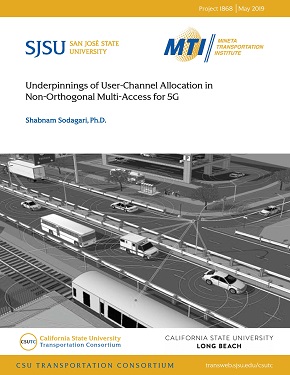- 408-924-7560
- mineta-institute@sjsu.edu
- Donate
Underpinnings of User-Channel Allocation in Non-Orthogonal Multi-Access for 5G
Non-orthogonal multiple access (NOMA) is a part of 5th generation (5G) communication systems. This article presents the underpinnings and underlying structures of the problem of NOMA user-channel allocation. The results are guaranteed to converge to a solution, which is stable. Specifically, the deployment of results to cellular vehicular communication systems is shown as a use case of 5G technology in smart transport. Generally, the results apply to any NOMA system. Unlike the orthogonal frequency division multiple access (OFDMA) resource allocation problem, the core matching is not the solution to NOMA resource allocation. The conditions under which the fix-point NOMA resource allocation is guaranteed to be stable from the viewpoint of both the base station and the NOMA users are described. In addition, relationships of NOMA user-channel resource allocation to game models and subgame perfect Nash equilibria are elucidated.
SHABNAM SODAGARI, PhD
Dr. Shabnam Sodagari received her PhD in electrical engineering from the Pennsylvania State University (Penn State). She is a senior member of the IEEE and a faculty member at the Electrical Engineering department, California State University Long Beach.
-
Contact Us
San José State University One Washington Square, San Jose, CA 95192 Phone: 408-924-7560 Email: mineta-institute@sjsu.edu






